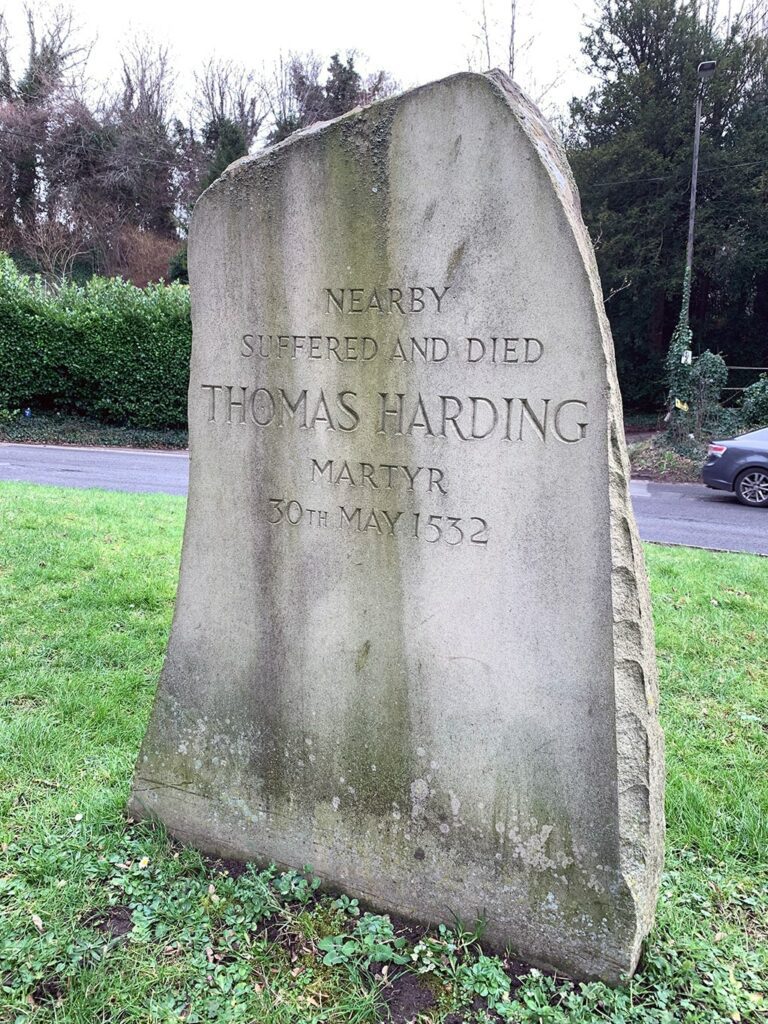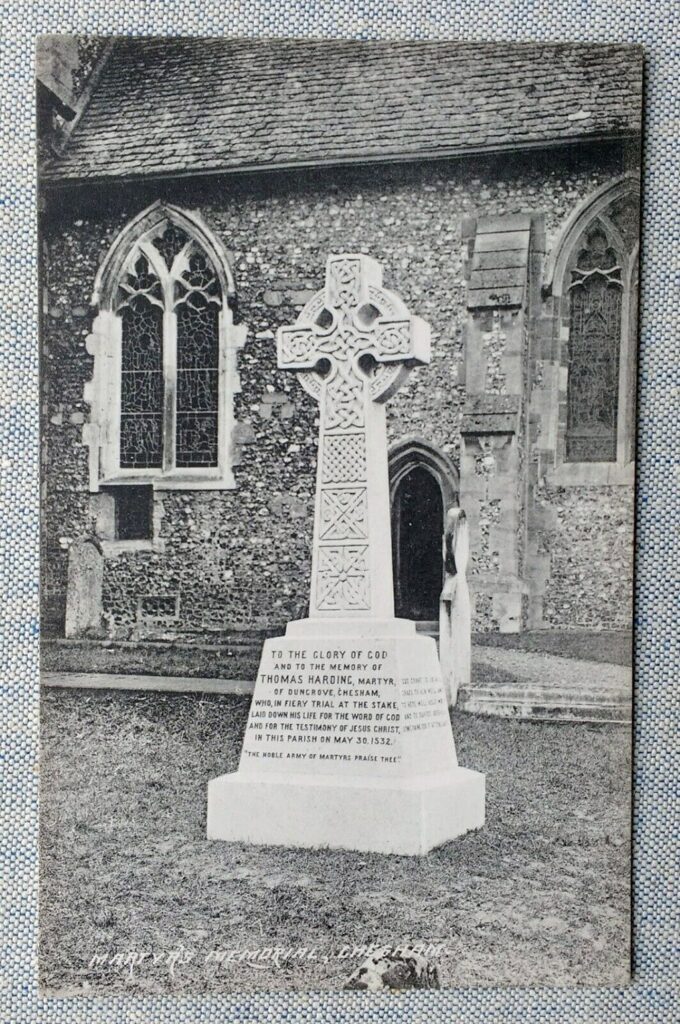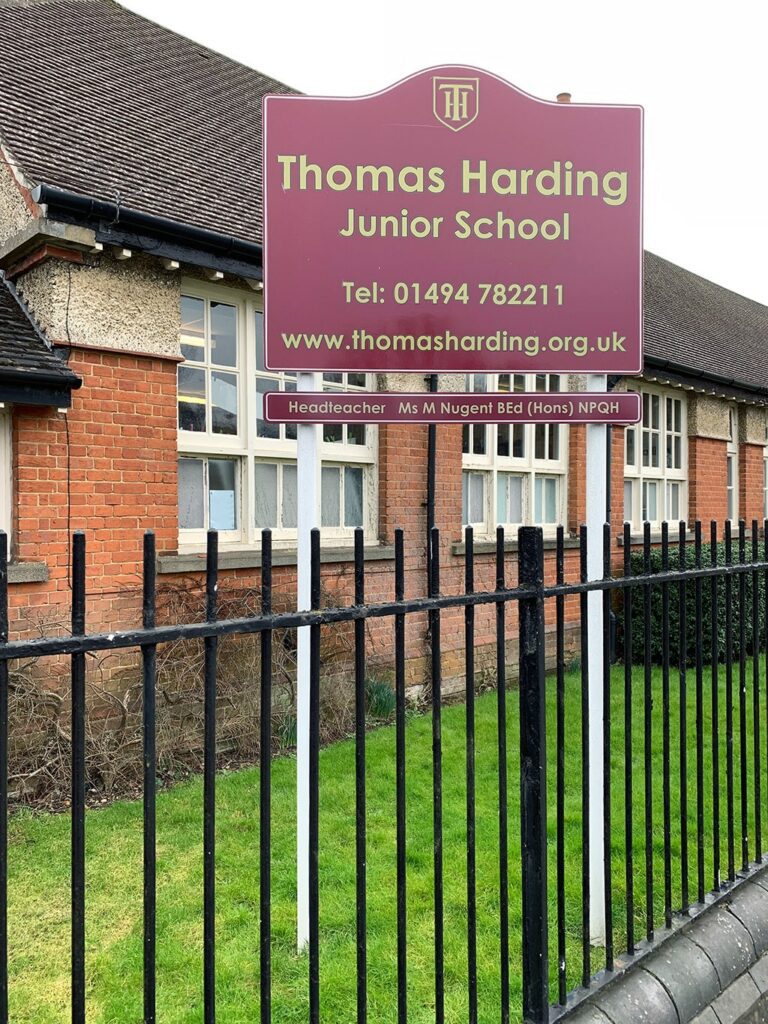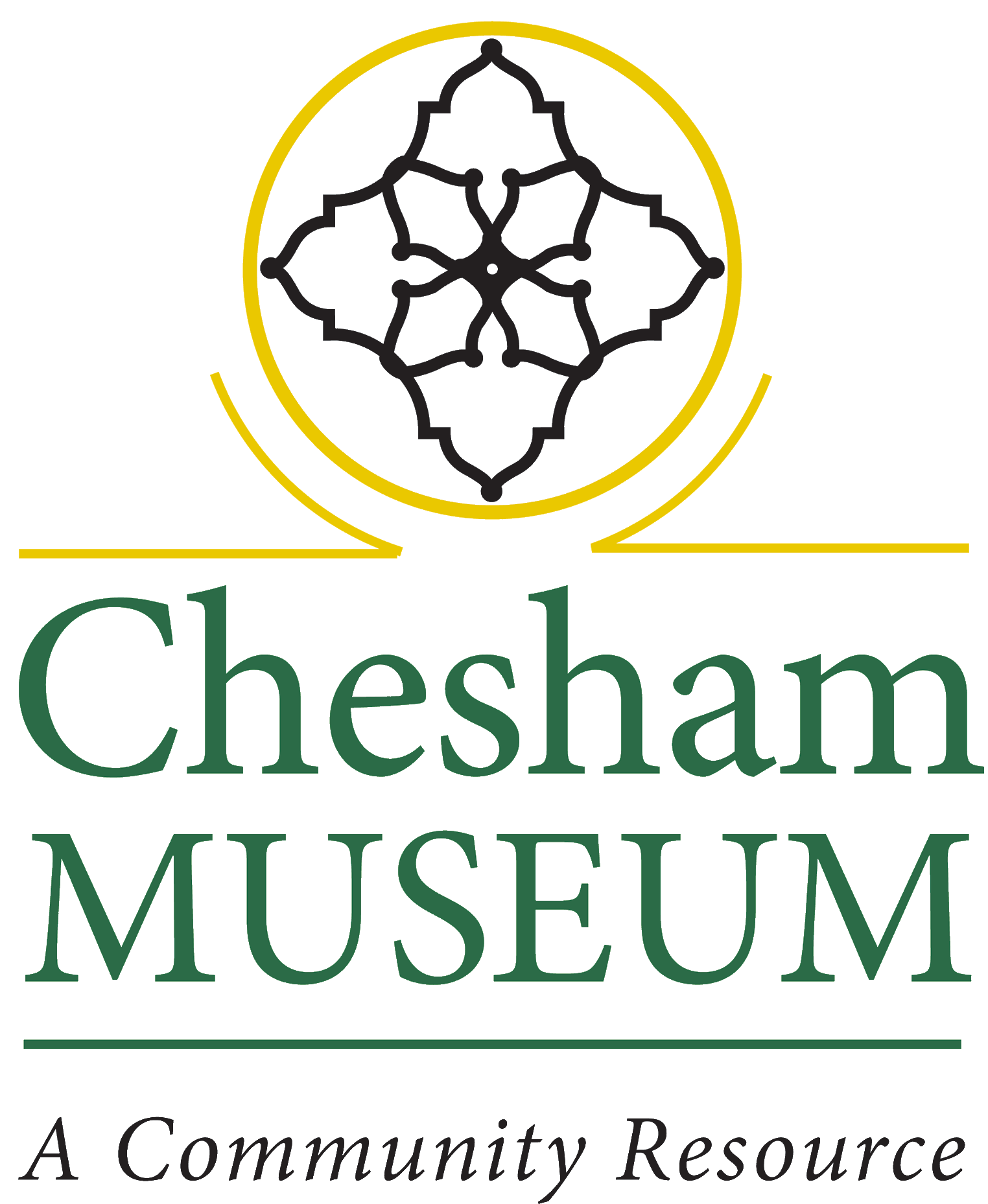The story of Thomas Harding – Chesham’s martyr
Chesham has its own Christian martyr commemorated in the name of a school, and two memorials in the town. This is the story…

John Wycliffe
In the mid-1300s John Wycliffe, a dean at Oxford University, protested against the abuses of the Church. John Wycliffe was a priest who wanted to see the Church radically reformed, and he believed that they should use English instead of Latin. His quarrel was not with faith itself. He was a strong Christian who emphasised personal faith based upon the Bible, but he was opposed to the errors of man-made organised religion. In 1368, Wycliffe moved to Bucks when he became rector of Ludgershall, near Aylesbury. He was there until 1374, when he became a priest at Lutterworth, in Leicestershire, where he stayed until he died in 1384.
Bible translation
Wycliffe and his followers translated the Bible from Latin into English, which was completed about 1382 and went through various revisions. This was the first complete Bible in English, and it opened up the Scriptures to ordinary people. Parts were copied by hand and distributed widely.
The Lollards
Many people supported Wycliffe’s ideas which spread across England. Some people became itinerant preachers. They went in pairs to towns and villages, telling people the good news about Jesus in English. People gathered in each other’s homes, where meetings were led by men or women, to pray and read the Bible in English. They were educated and peaceful people. They were called the Lollards, and they were particularly numerous in the Chilterns. Their beliefs were biblical, and by modern standards quite mainstream. However, at the time things like: meeting without a priest, using English, and having meetings outside a church building were regarded as suspicious by the main Church authorities.
Persecution
In 1401, Henry IV enacted a cruel statute that Lollards who refused to renounce their beliefs should be executed by burning. In 1408, unauthorised translations of the English Bible were banned, so owning one of these translations, which had been translated quite legally, became a crime.
In 1415, the Council of Constance posthumously declared Wycliffe to be a heretic, although he was not considered one in his lifetime. In the Chilterns, persecutions of Lollards occurred in 1414, 1462 and 1511. In December 1511, some Lollards living in Chesham who spoke against idolatry and superstition were sentenced to be monks in monasteries, and some were sentenced to make pilgrimages.
Reformation
Meanwhile in Germany, a similar movement to the Lollards was started in 1517, by a monk called Martin Luther. The German word for someone who protests, in this case against abuses in the Church, is Protestant, in English we might say protester. The Lollards were protesters against many of the same issues, so the Lollards associated themselves with the new Protestant movement, which they had a lot in common with.
Thomas Harding

One of the associates of the Lollards at Amersham was Thomas Harding. His story is told in Foxe’s Book of Martyrs, and in local oral tradition. It was probably in 1511, that William Smith, Bishop of Lincoln, set up an inquiry into heresy in south Bucks, from the former bishop’s palace at Wooburn, near Beaconsfield. Harding, along with many other Lollards agreed to renounce their views.
By 1521, Harding was found to have returned to holding Lollard beliefs, and was again called before an ecclesiastical court, set up by the new hard-line bishop John Longland. This time six Lollards, five men and one woman, were sentenced to death. Harding escaped death by recanting again. One of the conditions imposed on him was that he must not leave the parish of Amersham. However, after the executions in Amersham in 1522, Thomas Harding moved to Chesham, where he kept a smallholding, believed to be at Dungrove.
William Tyndale
Meanwhile there was a newer version of the New Testament in English, translated by William Tyndale from the original Greek. It was more accurate and easier to understand that Wycliffe’s translation. It was published in Germany, and first smuggled into England in early 1526. Tyndale’s New Testament became very popular and was adopted by the Lollards. Tyndale also wrote other theological works, which today would be classed as mainstream evangelical.
Execution
Around Easter in 1532 Thomas Harding, aged about 60, was found sitting by a stile going into the woods, where he was reading one of Tyndale’s books. Harding and his wife Alice, were arrested in their house, where other illegal books, including Tyndale’s New Testament were found under his floorboards.
He was taken to Wooburn to be interrogated by the bishop and by Rowland Messenger, the vicar of High Wycombe. The charges against him were that he was reading the Bible in English, claimed the bread and wine in the communion service were merely symbolic, rejected the worship of images, and spoke against pilgrimages for earning merit.
He was then taken to Chesham for execution. The place was at the dell up White Hill, (believed to be where 47 and 49 White Hill are now) on the way to Botley. Harding was chained to a stake and a fire was lit beneath him. It is recorded that one spectators threw a firelog at his head, which hastened his demise.
It was May 30, 1532 and he was the last Lollard to be executed in England, before the English Reformation. It was just 2 years after Harding’s execution, that the Church of England was formed, and some of the things the Lollards had believed and practised were no longer heretical.
Legacy

There are a number of reminders of him in Chesham: In February 1908 a granite cross memorial was erected to his memory, near the entrance to St Mary’s church, Chesham. In 1966, Germains School and White Hill Schools in Chesham combined under the new name of Thomas Harding School. In July 1994 a commemorative stone was erected on White Hill near to his place of execution. Harding is still a local surname, and many claim to be descended from him.

This blog is a modified form of an article which was first published in the pages of the Bucks Free Press, Amersham and Chesham edition, on February 13, 2022.


